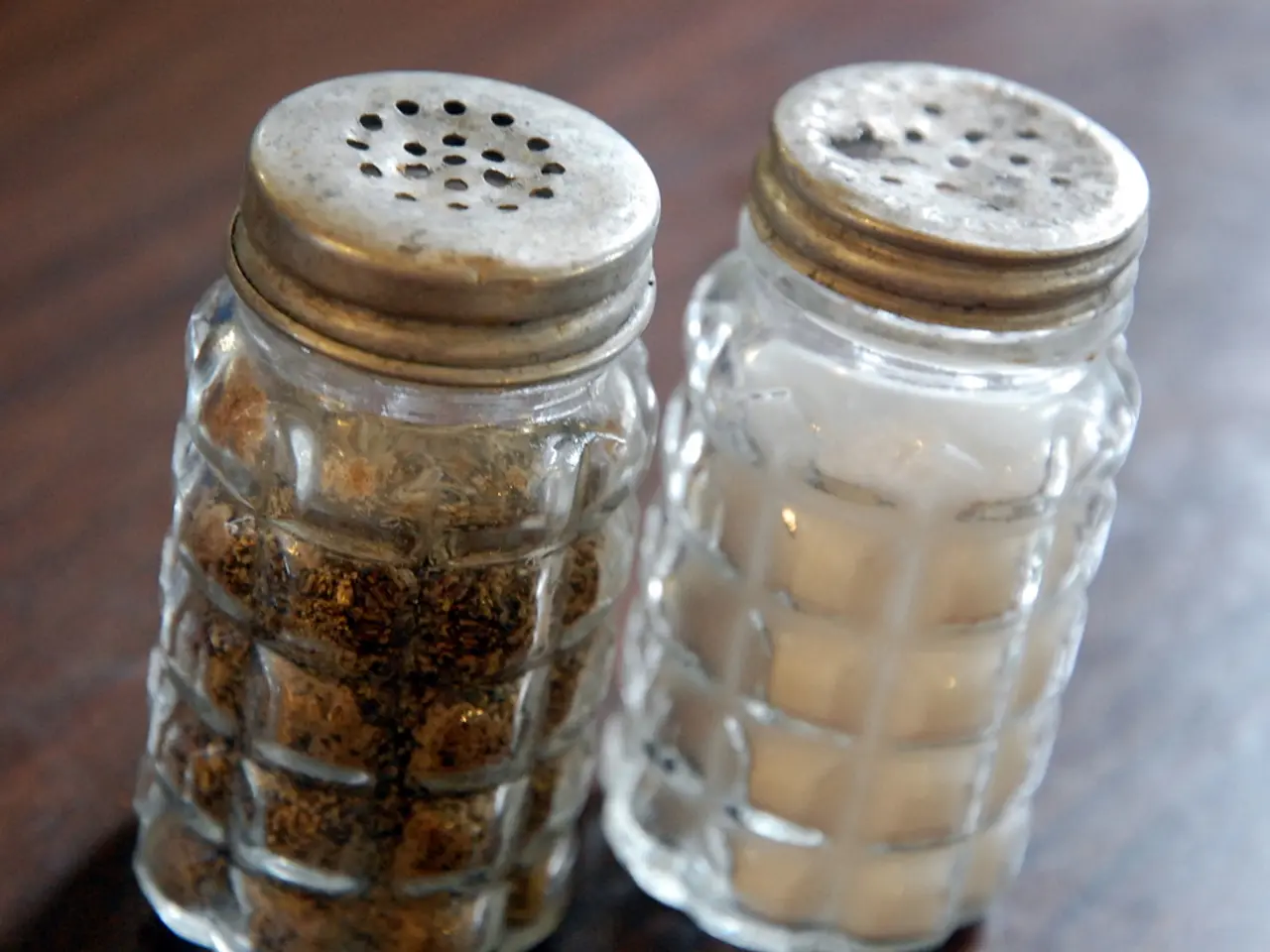Brine-Soaked Cucumbers: A pungent treat
Making Homemade Sour Pickles: A Probiotic-Rich, Fermented Delight
Sour pickles are more than just a tangy condiment; they're a probiotic-rich, fermented treat that's easy to make at home. Here's a step-by-step guide to creating your own sour pickles.
Preparation
Begin by preparing a saltwater brine. Dissolve approximately 30g of salt in 1 liter of water, and cool the solution to room temperature. Wash your cucumbers thoroughly, trimming the blossom ends, and set them aside.
Layering and Submerging
Layer your cucumbers in a fermentation container, such as a glass jar or crock, along with flavorings like dill heads, garlic cloves, peppercorns, and other spices. Some recipes suggest lining the bottom with cabbage leaves to keep cucumbers crisp. Ensure the cucumbers are fully submerged in the brine, and weigh them down with a plate or jar weight to prevent mold.
Fermentation and Monitoring
Cover the container loosely and ferment at room temperature. The fermentation process can take from about 5 days to 2-4 weeks, depending on desired sourness and temperature. Monitor the pickles for readiness; they're done when the cucumbers look translucent and the brine becomes tangy and cloudy. Avoid mold or foul odors.
Sealing and Preservation
Once the pickles are ready, seal the container tightly and refrigerate to slow fermentation and preserve the sour pickles.
Equipment and Ingredients
The equipment needed includes a quart-sized jar and a fermentation seal. The recipe for sour pickles includes 4 cups of water, 2 tablespoons of fine sea salt, 1 1/2 pounds of pickling cucumbers, garlic, spices, dill, and a horseradish leaf.
Health Benefits
Sour pickles are not only delicious but also beneficial for gut health, immune system function, and metabolic health. Unlike regular pickles, sour pickles are rich in probiotics.
Storage and Flavor
Sour pickles can be stored in the fridge or a cool spot like a basement or root cellar, where they should keep for about a year. The pickles have a deeply sour flavor with a salty edge. The brine often includes aromatic ingredients like garlic, dill, horseradish, and pickling spices.
Tips and Variations
Use a fermentation seal and a weight to prevent mold formation and help keep cucumbers submerged. Horseradish leaf can help keep pickles firm and prevent them from becoming mushy. For variations, consider trying cucumber kimchi, fermented carrots, easy fermented hot sauce, or fermented jalapenos.
References:
- A study on the diversity and health benefits of traditional pickles from the Himalayan and adjacent hilly regions of the Indian subcontinent.
- A fact sheet on Vitamin K from the National Institutes of Health.
Happy pickling!
Read also:
- Exploring the Strength of Minimally Digestible Diets: A Roadmap to Gastrointestinal Healing
- Secondhand Smoke: Understanding its Nature, Impact on Health, and Additional Facts
- Treatment Options for Uterine Cancer: An Overview
- Court in Madhya Pradesh rules that lewd conversations between a wife and other men can serve as grounds for divorce





